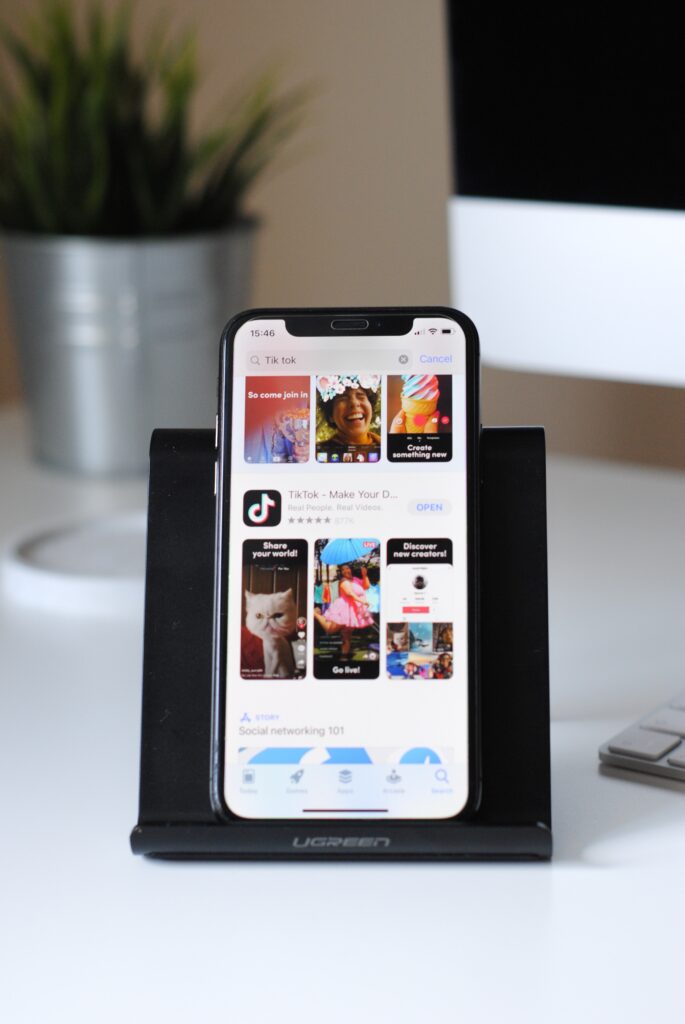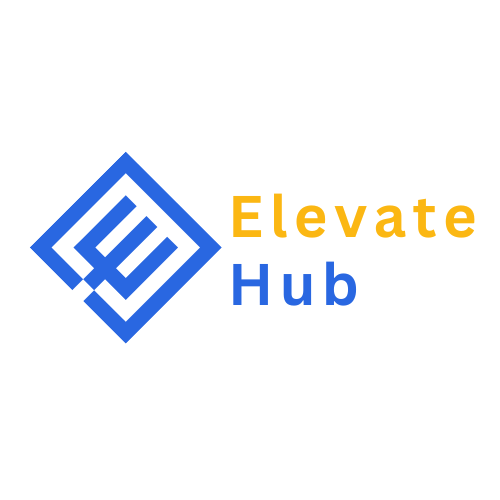In the digital age, Facebook has become a behemoth of connectivity, serving as a platform where over two billion individuals immerse themselves daily in a vast array of content. With monthly active users exceeding three billion, Facebook transcends being just a social network – it has transformed into a thriving digital ecosystem teeming with potential for marketers. Setting up a presence on Facebook is equivalent to opening a shop in the world’s busiest digital square.

This image is property of images.unsplash.com.
I. Harnessing the Power of Facebook Marketing
A. Understanding the Reach of Facebook
Facebook is not just a social network, it is a digital ecosystem with over 3 billion monthly active users. This massive user base presents a tremendous opportunity for marketers to reach a wide audience and promote their products or services. With 69% of Americans using Facebook in some capacity, it has become an integral part of people’s daily lives. By harnessing the power of Facebook marketing, you can tap into this vast audience and increase brand visibility and engagement.
B. The Benefits of Facebook Marketing
There are several key benefits to utilizing Facebook as a marketing platform. Firstly, Facebook offers advanced targeting capabilities that allow you to reach specific demographic groups based on individual user behavior. This fine laser targeting ensures that your ads are reaching the right audience, increasing the chances of conversion. Additionally, Facebook provides a variety of advertising formats, including videos, images, and carousel ads, allowing you to showcase your products or services in a visually appealing way. Furthermore, Facebook’s robust analytics tools provide valuable insights into the performance of your campaigns, enabling you to make data-driven decisions and optimize your marketing strategies.
C. The Potential of Facebook Advertising
Facebook advertising is a powerful tool that allows you to promote your business and drive results. With Facebook’s extensive user data, you can create highly targeted ads that will resonate with your audience and generate leads or sales. Whether you are looking to increase brand awareness, drive website traffic, or boost conversions, Facebook advertising offers a range of objectives to suit your marketing goals. By leveraging the potential of Facebook advertising, you can amplify your reach, engage with your audience, and achieve tangible results for your business.
II. Common Facebook Marketing Mistakes to Avoid
A. Failing to Define Clear Objectives
One of the most common mistakes in Facebook marketing is not setting clear objectives. Without clear goals, it becomes challenging to measure the success of your campaigns or determine the effectiveness of your strategies. Before diving into Facebook marketing, take the time to define your objectives. Are you looking to increase brand awareness, drive traffic to your website, or generate leads? By clearly outlining your goals, you can tailor your marketing efforts to achieve them and track your progress along the way.
B. Neglecting to Target the Right Audience
Another common mistake is failing to target the right audience. Facebook provides powerful targeting options that allow you to narrow down your audience based on demographics, interests, and behaviors. By understanding your target audience and utilizing these targeting capabilities, you can ensure that your ads are reaching the people most likely to be interested in your products or services. Neglecting to target the right audience can result in wasted ad spend and ineffective campaigns.
C. Inconsistent Branding and Messaging
Consistency is key when it comes to branding and messaging on Facebook. Your Facebook page should reflect your brand’s identity and values consistently across all elements, including cover image, profile picture, and about section. Additionally, ensure that your messaging is clear, compelling, and aligned with your overall brand voice. Inconsistency in branding and messaging can confuse your audience and dilute your brand’s message, making it less impactful.
D. Ignoring the Importance of Visual Content
Visual content plays a crucial role in Facebook marketing. Images and videos are more eye-catching and engaging than plain text, capturing the attention of users as they scroll through their newsfeeds. Ignoring the importance of visual content can result in your posts getting lost in the sea of content on Facebook. Invest in creating high-quality visual content that is relevant to your brand and appeals to your target audience. Visual content can help you stand out and leave a lasting impression on your audience.
III. Creating an Effective Facebook Page
A. Setting Up a Business Page
To get started with Facebook marketing, you need to set up a business page. A business page allows you to showcase your brand, connect with your audience, and promote your products or services. When setting up your business page, ensure that you provide accurate and detailed information about your business, including your website, contact information, and a compelling description. Choose a memorable and professional username that aligns with your brand to make it easy for people to find and remember your page.
B. Designing a Compelling Cover Image and Profile Picture
Your cover image and profile picture are the visual elements that represent your brand on Facebook. Design a compelling cover image that reflects your brand’s personality and captures the attention of visitors. Your profile picture should be a clear and recognizable representation of your brand, such as your logo. Both the cover image and profile picture should be of high quality and optimized for display on different devices.
C. Optimizing Page Information and About Section
The page information and about section of your Facebook page are crucial for providing visitors with important details about your business. Optimize these sections by including relevant keywords, a concise and compelling description of your business, and links to your website or other social media profiles. Use this space to highlight your unique selling propositions and what sets your brand apart from competitors.
D. Posting High-Quality Content
Consistently posting high-quality content is essential for engaging your audience and building a community around your brand. Create a content strategy that includes a mix of informative, entertaining, and promotional posts. Use eye-catching visuals, compelling headlines, and concise yet informative captions to capture the attention of your audience. Experiment with different content formats, such as videos, images, and links, to keep your page fresh and interesting.
E. Engaging with Your Audience
Engaging with your audience is key to building relationships and fostering loyalty. Respond to comments, messages, and reviews in a timely and professional manner. Encourage discussions and ask questions to spark engagement. Show appreciation for your audience by acknowledging their support and sharing user-generated content. By actively engaging with your audience, you can cultivate a thriving community around your brand on Facebook.
IV. Maximizing Facebook Group Marketing
A. Joining Relevant Facebook Groups
Facebook groups are communities where like-minded individuals come together to discuss and share information about specific topics. Joining relevant Facebook groups can provide valuable networking opportunities and exposure for your business. Look for groups that align with your industry, interests, or target audience. Engage in meaningful conversations, contribute valuable insights, and share your expertise to establish yourself as a trusted authority within the group.
B. Establishing Your Own Facebook Group
Establishing your own Facebook group can be a powerful tool for building a community around your brand and fostering deeper engagement with your audience. Create a group that caters to the interests and needs of your target audience. Provide valuable content, facilitate discussions, and encourage members to share their experiences and insights. By nurturing your Facebook group, you can cultivate a loyal and engaged community of brand advocates.
C. Engaging and Building Relationships within Groups
Once you have joined or established relevant Facebook groups, it is crucial to actively engage and build relationships within these communities. Be genuinely interested in the discussions and contribute meaningful insights. Avoid purely self-promotional behavior and focus on adding value to the group. Connect with other group members by commenting on their posts, offering helpful advice, and collaborating on shared interests. Building relationships within Facebook groups can lead to valuable partnerships, collaborations, and increased brand visibility.

This image is property of images.unsplash.com.
V. Leveraging Influencer Page Outreach
A. Identifying Influencers in Your Niche
Influencers are individuals who have a significant following and influence within a particular niche or industry. Leveraging influencer page outreach can help amplify your brand’s reach and credibility. Identify influencers in your niche by conducting research, exploring relevant hashtags, and using influencer discovery tools. Look for influencers whose values align with your brand and whose audience matches your target demographic.
B. Building Relationships with Influencers
Building relationships with influencers requires a strategic approach. Start by following and engaging with them on social media platforms, sharing their content, and leaving thoughtful comments. Consider reaching out via direct message or email to introduce yourself and express your admiration for their work. Offer to collaborate on mutually beneficial projects or provide them with incentives to promote your brand. Building genuine relationships with influencers takes time and effort but can yield significant rewards in terms of brand exposure and credibility.
C. Collaborating and Sponsored Posts
Collaborating with influencers can take various forms, such as sponsored posts, product reviews, or giveaways. When approaching influencers for collaborations, be clear about your expectations and what you can offer in return. Provide them with detailed information about your brand, products, or services, and how their involvement can benefit their audience. Collaborative efforts with influencers can extend your reach, increase brand awareness, and generate buzz around your brand.
VI. Implementing Paid Page Boost Campaigns
A. Understanding the Benefits of Page Boosting
Page boosting refers to paying to promote your Facebook page or specific posts to a wider audience. Utilizing paid page boost campaigns can help increase the visibility of your page and amplify your reach. Boosting your page allows you to reach a larger audience, including individuals who may not already be following your page. This increased visibility can lead to higher engagement, increased brand awareness, and a larger fan base.
B. Setting Clear Goals and Objectives
Before implementing a paid page boost campaign, it is essential to set clear goals and objectives. Determine what you want to achieve with your campaign, whether it is increasing page likes, driving traffic to your website, or promoting a specific offer. By setting clear goals, you can tailor your campaign strategy, target the right audience, and measure the success of your campaign effectively.
C. Targeting the Right Audience
A vital aspect of a successful paid page boost campaign is targeting the right audience. Facebook provides robust targeting options that allow you to narrow down your audience based on demographic information, interests, and behaviors. By refining your target audience and showing your boosted content to individuals who are most likely to be interested in your brand, you can maximize the effectiveness of your campaign and increase the chances of conversion.
D. Monitoring and Analyzing Campaign Performance
Monitoring and analyzing the performance of your paid page boost campaigns is crucial for optimizing your strategies and maximizing your ROI. Utilize Facebook’s analytics tools to track metrics such as reach, engagement, and conversions. Analyze the data to identify trends, understand what is resonating with your audience, and make data-driven decisions. Continuously monitor your campaign performance and iterate your strategies based on the insights gained.

This image is property of images.unsplash.com.
VII. Driving Results with Paid Traffic Campaigns
A. Creating Compelling Ad Creatives
Creating compelling ad creatives is essential for driving results with paid traffic campaigns. Your ads should capture the attention of your target audience and entice them to take action. Use high-quality visuals, persuasive copy, and clear calls to action to create ads that stand out and encourage engagement. Experiment with different ad formats, such as videos, carousel ads, or lead generation ads, to determine what resonates best with your audience.
B. Defining Target Audience and Segmentation
Defining your target audience and utilizing segmentation allows you to create tailored ads that resonate with different audience segments. Segment your audience based on demographics, interests, behaviors, or past interactions with your brand. By understanding the unique preferences and needs of each segment, you can create highly relevant ads that drive better results and increase the chances of conversion.
C. Optimizing Ad Bidding and Budgets
Effective optimization of ad bidding and budgets can help maximize the impact of your paid traffic campaigns. Test different bidding strategies, such as cost per click (CPC) or cost per thousand impressions (CPM), to determine which yields the best results for your campaign objectives. Allocate your budgets wisely, focusing on the highest-performing ads and audience segments. Continuously monitor and adjust your bidding and budgets based on the performance data.
D. Analyzing Ad Performance and Iterating Strategies
Analyzing the performance of your paid traffic campaigns is crucial for optimizing your strategies and improving results. Track key metrics such as click-through rates (CTR), conversion rates, and return on ad spend (ROAS). Analyze the data to identify trends, pinpoint areas for improvement, and iterate your strategies accordingly. Experiment with different variables, such as ad creative, targeting, or placements, to find the optimal combination that drives the best results.
VIII. Generating Leads with Paid Lead Generation Campaigns
A. Creating Effective Lead Generation Forms
Paid lead generation campaigns allow you to capture valuable leads and build your email list. An essential element of these campaigns is creating effective lead generation forms. Keep the forms concise and easy to fill out, asking for only essential information. Offer incentives, such as exclusive content or discounts, to encourage users to provide their contact details. Place the forms strategically within your ads, landing pages, or website to maximize visibility and conversions.
B. Designing Engaging Lead Magnets
Lead magnets are valuable resources or incentives that you offer in exchange for users’ contact information. Design engaging lead magnets that provide valuable insights, solve a problem, or offer exclusive content. Consider formats such as e-books, checklists, webinars, or templates that align with your target audience’s needs and preferences. Promote your lead magnets through your paid lead generation campaigns to attract qualified leads.
C. Setting Up Targeted Lead Ads
Targeted lead ads are a powerful tool for generating leads on Facebook. Utilize Facebook’s lead ad format to create a seamless user experience, allowing users to submit their contact information directly within the ad. Customize the lead form to collect relevant information and integrate it with your CRM or email marketing platform. Target your ads to reach individuals who are most likely to be interested in your offer, increasing the chances of lead generation.
D. Nurturing and Converting Leads
Generating leads is only the first step; nurturing and converting leads is equally important. Set up automated email sequences to engage with your leads and provide them with valuable content or offers. Personalize the email communication based on the information collected during the lead generation process. Continuously track and analyze the performance of your lead generation campaigns, making adjustments to improve lead quality and conversion rates.
IX. Harnessing the Power of Facebook Pixel Retargeting
A. Installing and Setting Up the Facebook Pixel
The Facebook Pixel is a powerful tool that allows you to track user behavior and optimize your campaigns. Install the Facebook Pixel on your website by placing the pixel code in the header of your website. Set up conversion tracking to track specific actions, such as purchases or sign-ups. By installing and setting up the Facebook Pixel, you can gather valuable data about your website visitors and target them with relevant retargeting ads.
B. Creating Custom Audiences for Retargeting
Custom audiences are groups of individuals who have interacted with your website or content in some way. Utilize the Facebook Pixel data to create custom audiences for retargeting. Segment your audiences based on specific actions, such as adding items to the cart or visiting specific pages. By targeting these custom audiences with retargeting ads, you can drive conversions and increase the chances of re-engaging users who have shown interest in your brand.
C. Designing Targeted Retargeting Ads
Retargeting ads are a highly effective way to re-engage with individuals who have shown interest in your brand but have not yet converted. Design targeted retargeting ads that remind users of their previous interactions and encourage them to take the desired action. Use persuasive copy, captivating visuals, and personalized messaging to create ads that resonate with your audience. Continuously test and optimize your retargeting ads based on performance data to maximize engagement and conversions.
D. Tracking and Analyzing Retargeting Campaign Success
Tracking and analyzing the success of your retargeting campaigns is crucial for optimizing your strategies and improving results. Utilize Facebook’s analytics tools to monitor metrics such as click-through rates, conversion rates, and return on ad spend. Analyze the data to identify patterns, understand user behavior, and refine your retargeting strategies. Continuously iterate your campaigns based on insights gained from the data to drive better results.
X. Optimizing Your Facebook Ad Campaigns
A. Conducting A/B Testing for Ad Variations
A/B testing is a valuable technique for optimizing your Facebook ad campaigns. Create multiple variations of your ads, testing different elements such as headlines, visuals, or calls to action. Split your audience into segments and show each segment a different ad variation. Monitor the performance of each variation, comparing metrics such as click-through rates and conversion rates. Based on the results, identify the top-performing ad variations and adjust your campaign accordingly.
B. Continuously Monitoring and Analyzing Ad Metrics
Continuously monitoring and analyzing ad metrics is essential for optimizing your Facebook ad campaigns. Track key metrics such as impressions, reach, click-through rates, and conversions. Identify trends, patterns, or areas for improvement based on the data. Utilize Facebook’s analytics tools or third-party tools to gain deeper insights into the performance of your campaigns. Make data-driven decisions and adjust your strategies based on the metrics to improve the effectiveness of your campaigns.
C. Optimizing Ad Targeting and Placement
Effective ad targeting and placement can significantly impact the success of your Facebook ad campaigns. Refine your ad targeting based on audience demographics, interests, or behaviors to ensure that your ads are reaching the right people. Experiment with different ad placements, such as newsfeed, right column, or Instagram, to determine which yields the best results for your objectives. Continuously optimize your ad targeting and placement based on performance data to maximize reach and engagement.
D. Implementing Retargeting Strategies
Retargeting is a powerful strategy for re-engaging with individuals who have shown interest in your brand. Utilize the Facebook Pixel data to create custom audiences and target them with retargeting ads. Develop retargeting strategies that remind users of their previous interactions and encourage them to take the desired action. Personalize your messaging and offer incentives to entice users to convert. Continuously analyze the performance of your retargeting campaigns and refine your strategies to maximize conversions.
In conclusion, Facebook marketing presents a tremendous opportunity for businesses to reach a vast audience, increase brand visibility, and drive results. By understanding the reach and potential of Facebook, avoiding common marketing mistakes, and implementing effective strategies, you can harness the power of this platform to grow your business. From creating an effective Facebook page to leveraging influencer partnerships, implementing paid campaigns, and optimizing your ad strategies, there are numerous avenues to explore in order to make the most of Facebook marketing. So, get ready to engage in Facebook marketing and unlock its full potential for your business!




